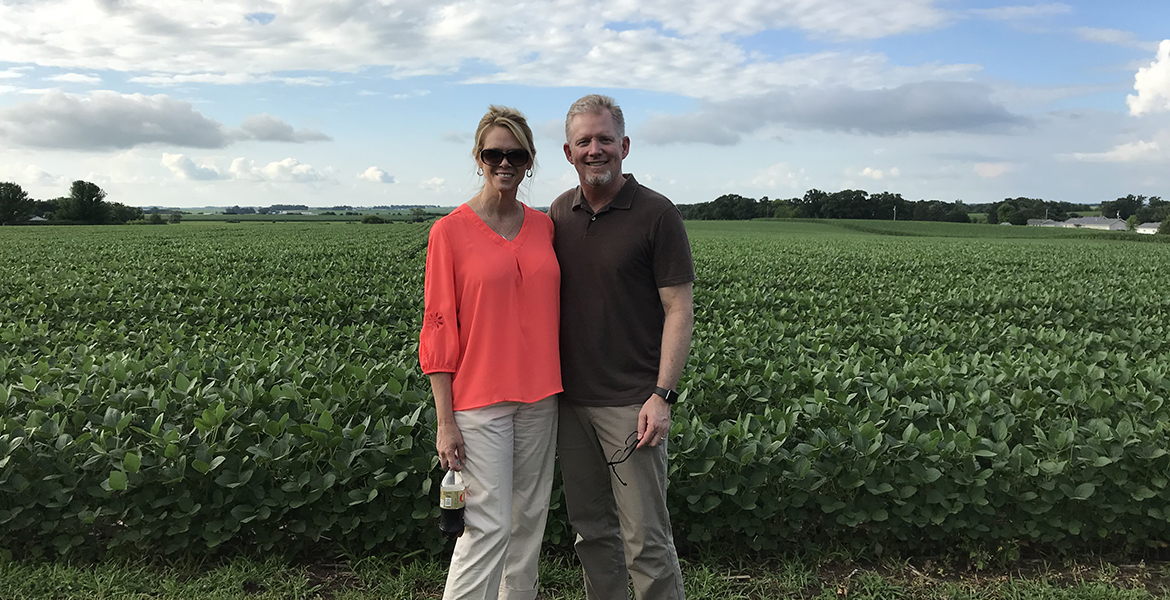
From physiology to endocrinology: A doctor's career journey
Tuesday, September 22, 2020
Dr. Erik Aspenson's career as an endocrinologist began at OSU more than 30 years ago when he earned his bachelor's degree in physiology. After attending medical school and serving 11 years with the U.S. Air Force, the father of four turned his focus to treating patients with diabetes and thyroid disease — something he's done in the Tulsa area for the past 15 years. Aspenson gave us a look into his life and career, including what drew him to OSU as an incoming freshman, the unique way he starts each day and what it means to be a Cowboy.
Tell us a little about your background.
I am an adopted Oklahoman having moved here as a teenager. My father is a retired U.S. Air Force pilot and we moved frequently. I have lived all over the nation but Oklahoma is home.
Tell us a little about what you are doing now.
After medical school I served for 11 years in the U.S. Air Force as an internist and endocrinologist. I have been working as a clinical endocrinologist at Oklahoma Heart Institute in Tulsa since 2004. Primarily I see diabetes and thyroid disease, but my particular area of interest is thyroid disease. I see a large volume of patients with thyroid nodules and thyroid cancer.
Why did you decide to attend OSU?
I visited the campus when I was in Stillwater for a high school swimming meet and thought it felt like a university campus should. That’s the public answer, I guess. The answer I tell my friends is they offered me a tuition waiver and you could not turn a corner without running into a pretty girl. I was 17, so I thought about it like a 17-year-old. Turns out I was thinking rather clearly. I met my wife Karen (’89 B.A. R-TV-F, ’93 B.S. industrial engineering and management) at OSU. Our 29th anniversary is this year.
What is the most important thing you learned while you were at OSU?
You’re probably not the smartest person in the room unless you’re alone. You have plenty of opportunities to learn academically, and about life, from your faculty and peers if you take a minute and listen.
Why did you decide to pursue physiology at OSU?
Initially I was enrolled in engineering at OSU. I was thinking of pursuing the biomedical engineering path. However, that was a little more on the bench/lab science side of the equation than I really think I wanted. Because I was changing my long-term goal toward medical school, I wanted a major that would also serve well to prepare me for both medical school and lifelong application in the healthcare field. Understanding the physics and chemistry of how the body functions is fundamental to every medical field, so I changed my major to physiology after the first semester. That said, I’ve learned from observing my colleagues over the years that engineering of any variety can be good premedical preparation as well. The way they learn to think as engineers and approach problems works well in medicine.
What do you remember most vividly about OSU?
It’s a toss-up between the sheer energy in the air on gameday, especially big games like Bedlam, versus the utter quiet and ghost-town vibe walking to a late-day final exam on Friday.
What are some accomplishments that you are proud of since leaving OSU?
- I attended OU medical school (sorry) on a full scholarship (Air Force Health Professions Scholarship). I trained in Internal Medicine and Endocrinology in the Air Force and was selected the Chief Resident of our Internal Medicine program.
- I served 11 years in the U.S. Air Force (1993-2004), separating as a Major. I served in California, Alaska, Texas, Germany and Saudi Arabia.
- I was selected as a Fellow of the American Association of Clinical Endocrinologists and Fellow of the American College of Physicians.
- I was the first endocrinologist in northeast Oklahoma (Tulsa area) to have Endocrine Certification in neck ultrasound. With my colleagues at Oklahoma Heart Institute, we incorporated ultrasound into routine management and diagnosis of outpatient thyroid cancer, thyroid nodules and parathyroid disease. We were the first endocrine office state-wide to be certified by the American Institute of Ultrasound Medicine.
- Most importantly, I have been caring for Oklahomans in the Tulsa area for the past 15 years. I start my days asking God to let me be a blessing to my fellows, his children. About a month ago, after counseling a patient about her cancer, reassuring them regarding prognosis and laying out our plan going forward, she said, “Thank you, doctor. I want you to know you are such a blessing to us.” Great day, right there.
What advice would you give to current students at OSU?
Make connections. Mentorship is talked about a lot, but I don’t know that it needs be that formal. Students will encounter people in their collegiate life who are a little further along the same path, or who are not in the university circle per se but have similar interests or knowledge in the student’s field of study. Nurture those connections and maintain them. I’ve been blessed to encounter accomplished people who are eager to share what they learned along the way, both pitfalls and successes.
What does being a Cowboy mean to you?
It’s great that OSU was able to evolve into a full-fledged research university. Being a Cowboy also means being part of the great tradition started as Oklahoma A&M. The promise of the land-grant university to enhance education in agriculture, science and engineering for the public.
MEDIA CONTACT: Kendra Carlson | College of Arts and Sciences | 405-744-8214 | kendra.carlson@okstate.edu
